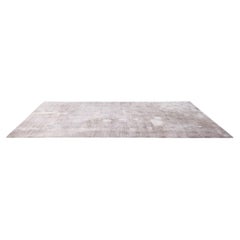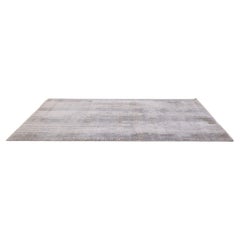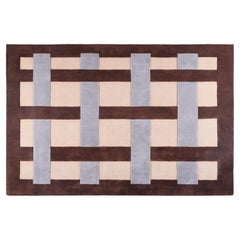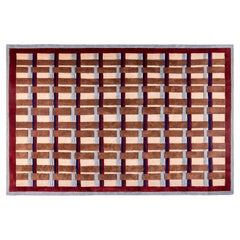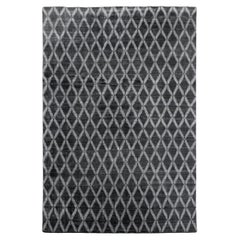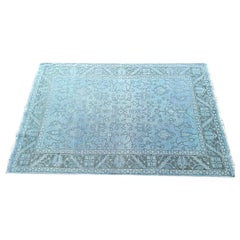Restoration Hardware Rugs and Carpets
to
Width
to
Length
to
2
2
2
2
2
2
2
2
2
2
2
13
9,002
3,905
1,428
1,216
Creator: Restoration Hardware
Restoration Hardware Rug
By Restoration Hardware
Located in Countryside, IL
Restoration Hardware Rug
This rug measures: 170.5 wide x 120.75 deep x 0.5 inches high
We take our photos in a controlled lighting studio to show as much detail as possible. We do ...
Category
Early 2000s American Modern Restoration Hardware Rugs and Carpets
Materials
Textile
$2,595
Restoration Hardware Rug
By Restoration Hardware
Located in Countryside, IL
Restoration Hardware Rug
This rug measures: 145 wide x 108.5 deep x 0.5 inches high
We take our photos in a controlled lighting studio to show as much detail as possible. We do NOT...
Category
Early 2000s American Modern Restoration Hardware Rugs and Carpets
Materials
Textile
$2,595
Related Items
Wide Weave Rug Earl Grey
By Pieces
Located in Brooklyn, NY
The Plaid rug collection features a modern take on classic plaid motifs. Perfect for adding a fresh color palette and sophisticated charm to modern spaces. Timeless design for a visu...
Category
2010s Indian Modern Restoration Hardware Rugs and Carpets
Materials
Wool
Twill Rug Cherry
By Pieces
Located in Brooklyn, NY
The Plaid rug collection features a modern take on classic plaid motifs. Perfect for adding a fresh color palette and sophisticated charm to modern spaces. Timeless design for a visu...
Category
2010s Indian Modern Restoration Hardware Rugs and Carpets
Materials
Wool
Rug & Kilim’s Modern Cowhide Rug in Off-White
By Rug & Kilim
Located in Long Island City, NY
This 7x7 contemporary cowhide rug, originating from Brazil, is a comfortable and stylish addition to a wide range of spaces for its unique shape inherent to the craft.
On the Desig...
Category
2010s Brazilian Modern Restoration Hardware Rugs and Carpets
Materials
Animal Skin
AKI Rug C, Grey Organic Shaped Rug
By Studio Christine Kalia
Located in Larnaca, CY
AKI rug C is an organic formed rug, which in combination with the elements that surround it create different shapes, as a negative space drawing on th...
Category
2010s European Restoration Hardware Rugs and Carpets
Materials
Synthetic
Twill Rug Butterscotch
By Pieces
Located in Brooklyn, NY
The Plaid rug collection features a modern take on classic plaid motifs. Perfect for adding a fresh color palette and sophisticated charm to modern spaces. Timeless design for a visu...
Category
2010s Indian Modern Restoration Hardware Rugs and Carpets
Materials
Wool
Rug & Kilim’s Extra Large Cowhide Rug in Deep Brown Tones
By Rug & Kilim
Located in Long Island City, NY
This handmade 7x8 contemporary cowhide rug from Rug & Kilim represents an exciting new collection of rare large-size pieces in the style—each a comfortable and stylish addition to a ...
Category
2010s Brazilian Modern Restoration Hardware Rugs and Carpets
Materials
Fur, Hide, Leather
Rug & Kilim’s Contemporary Cowhide Rug in Beige-Brown, Gray and White Tones
By Rug & Kilim
Located in Long Island City, NY
This 7x9 cowhide rug is a contemporary piece from Rug & Kilim’s collection of hide and tanned rugs.
On the Design:
The all-natural fur enjoys wavy stripes of beige-brown, gray, and white tones, with an almost salt-and-pepper play of hues. Admirers of the craft will note the irregular shape inherent to this piece, and its playful look that offers vast design applications welcoming unshaped rugs...
Category
2010s Brazilian Modern Restoration Hardware Rugs and Carpets
Materials
Hide
Rug & Kilim’s Contemporary Cowhide Rug in White and Beige-Brown
By Rug & Kilim
Located in Long Island City, NY
A 7x7 from Rug & Kilim’s line of handmade cowhide rugs. Enjoying a silky, lustrous sheen complementing the pallet of white and brown with cream accents. A comfortable, textural choic...
Category
2010s Brazilian Modern Restoration Hardware Rugs and Carpets
Materials
Leather
Rug & Kilim’s Contemporary Cowhide Rug in Black and White
By Rug & Kilim
Located in Long Island City, NY
A 7x7 from Rug & Kilim’s line of handmade cowhide rugs. Enjoying a silky, lustrous sheen complementing the positive-negative black and white play with subtle distinction. A comfortab...
Category
2010s Brazilian Modern Restoration Hardware Rugs and Carpets
Materials
Leather
Rug Coromandel Beige
By Fornasetti
Located in MILANO, IT
Fornasetti rugs born from the combination of classical and contemporary themes and the visual universe of the Milanese Atelier turns into sensory surfac...
Category
21st Century and Contemporary Italian Modern Restoration Hardware Rugs and Carpets
Materials
Wool
Rug & Kilim’s Large Cowhide Rug in Black and Brown Tones
By Rug & Kilim
Located in Long Island City, NY
This handmade 7x8 contemporary cowhide rug from Rug & Kilim represents an exciting new collection of rare large-size pieces in the style—each a comfortable and stylish addition to a ...
Category
2010s Brazilian Modern Restoration Hardware Rugs and Carpets
Materials
Fur, Hide, Leather
Rug & Kilim’s Contemporary Cowhide Rug in Cream
By Rug & Kilim
Located in Long Island City, NY
A 7x7 from Rug & Kilim’s line of handmade cowhide rugs. Enjoying a silky, lustrous sheen complementing the pallet of beige-brown with rose gold hints. A comfortable, textural choice,...
Category
2010s Brazilian Modern Restoration Hardware Rugs and Carpets
Materials
Leather
Previously Available Items
Ben Soleimani "Rama" Wool Blend Rug
By Restoration Hardware
Located in Astoria, NY
Ben Soleimani for Restoration Hardware "Rama" pattern rug in iron-tones, labels to underside.
Dimensions: 10' L x 14' W.
Dealer: S138XX
Category
21st Century and Contemporary Asian Modern Restoration Hardware Rugs and Carpets
Materials
Wool
Rh Restoration Hardware Ben Soleimani Ashra Rug
By Ben Soleimani, Restoration Hardware
Located in Lake Worth, FL
For FULL item description click on CONTINUE READING at the bottom of this page.
RH Restoration Hardware Ben Soleimani "Ashra" Rug
Knotted by hand from pure wool. Lush pile is ...
Category
21st Century and Contemporary Restoration Hardware Rugs and Carpets
Materials
Wool
Restoration Hardware rugs and carpets for sale on 1stDibs.
Restoration Hardware rugs and carpets are available for sale on 1stDibs. These distinctive items are frequently made of wool and are designed with extraordinary care. Many of the original rugs and carpets by Restoration Hardware were created in the modern style in asia during the 21st century and contemporary. Prices for Restoration Hardware rugs and carpets can differ depending upon size, time period and other attributes — on 1stDibs, these items begin at $1,300 and can go as high as $1,356, while a piece like these, on average, fetch $1,328.
Questions About Restoration Hardware Rugs and Carpets
- 1stDibs ExpertApril 5, 2024Yes, RH is the same as Restoration Hardware. When the company opened in 1979, Restoration Hardware was its name. On January 1, 2017, the name officially changed to RH. The shift was meant to represent the company's move away from its hardware store beginnings toward a focus on high-end furniture and housewares. On 1stDibs, find an assortment of Restoration Hardware furniture.
- 1stDibs ExpertFebruary 27, 2024What the style of Restoration Hardware is called can vary from piece to piece. Generally, the brand's style is modern. Some pieces skew rustic, while others are more industrial. Restoration Hardware also produces pieces that are in line with coastal and farmhouse design sensibilities. On 1stDibs, find a selection of Restoration Hardware furniture.
- 1stDibs ExpertFebruary 1, 2024Yes, Restoration Hardware does have sales from time to time. However, it is rare to find any products deeply discounted at the store, even during sales events. In addition to shopping Restoration Hardware online at the official website and in stores, you can also find the brand's products on trusted online platforms like 1stDibs. Shop a selection of Restoration Hardware pieces on 1stDibs.
- 1stDibs ExpertApril 22, 2024Where Restoration Hardware furniture is made depends on the piece. Most of the luxury brand's furniture comes from factories in China. However, the company does manufacture some furnishings in the U.S. and other countries, such as Australia, Indonesia and India. On 1stDibs, find a selection of Restoration Hardware furniture.
- 1stDibs ExpertApril 5, 2022Yes, Restoration Hardware furniture is primarily manufactured in China. Now known as RH, the company prides itself as a curator of high-quality design and style with various home furniture and decor offerings. You’ll find a large variety of RH furniture on 1stDibs.
Recently Viewed
View AllMore Restoration Hardware Furniture
Restoration Hardware Seating
Restoration Hardware Lighting
Restoration Hardware Tables
Restoration Hardware Building and Garden Elements
Restoration Hardware Case Pieces and Storage Cabinets
Restoration Hardware Wall Decorations
Restoration Hardware Sofas
Restoration Hardware Patio and Garden Furniture
Restoration Hardware Floor Lamps
Restoration Hardware Table Lamps
Restoration Hardware Armchairs
Restoration Hardware Dining Room Chairs
